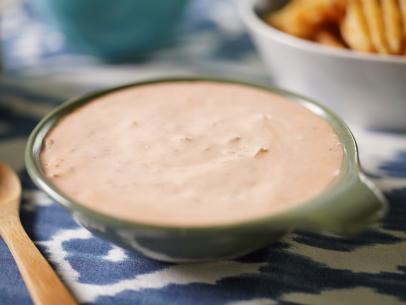
Recipe courtesy of Hooni Kim
Recipe courtesy of Hooni Kim
Watch how to make this recipe.
Kimchi
Getting reviews...
- Level: Advanced
- Total: 14 days 13 hr
- Active: 1 hr
- Yield: 20 servings
-
- Nutritional Analysis
- Per Serving
- Serving Size
- 1 of 8 servings
- Calories
- 234
- Total Fat
- 6 g
- Saturated Fat
- 1 g
- Carbohydrates
- 48 g
- Dietary Fiber
- 12 g
- Sugar
- 28 g
- Protein
- 8 g
- Cholesterol
- 20 mg
- Sodium
- 1015 mg
There's nothing more Korean than homemade kimchi! Chef Kim will show you how to brine, marinate, ferment, and store it. The best part about making kimchi at home is that you can sample it at various stages of fermentation—something store-bought doesn't generally allow for.
- Level: Advanced
- Total: 14 days 13 hr
- Active: 1 hr
- Yield: 20 servings
-
- Nutritional Analysis
- Per Serving
- Serving Size
- 1 of 8 servings
- Calories
- 234
- Total Fat
- 6 g
- Saturated Fat
- 1 g
- Carbohydrates
- 48 g
- Dietary Fiber
- 12 g
- Sugar
- 28 g
- Protein
- 8 g
- Cholesterol
- 20 mg
- Sodium
- 1015 mg
Ingredients
Kimchi
Brine
Marinade
Directions
- Brine cabbage: Cut cabbage vertically into 4-6 wedges (depending on cabbage size), keeping the root ends intact so the leaves remain attached. In a small bowl, combine salt and sugar. Place cabbage wedges on a flat surface. Working with one wedge at a time, separate leaves and spread sugar/salt mixture between every layer.
- Place prepared cabbage in a large, nonreactive container and add water. Cover cabbage with plastic wrap and put a weighted bowl on top. In less than an hour, the cabbage will soften and shrink as the leaves release water, and the level of brining solution will rise. Let sit at room temperature, 8-12 hours. Meanwhile, make the marinade, Steps 3 & 4.
- Start marinade: Place gochugaru in a bowl and hydrate with ½ cup water and set aside, 5–10 minutes. Peel the Asian pear, cut into pieces, and place in food processor; add the salted shrimp and peeled garlic cloves. Purée until smooth, 30 seconds; pour mixture into the hydrated gochugaru. Set aside.
- Finish marinade: Trim ends of the radish, cut in half, and slice away the fibrous outer layer. Using a mandoline fitted with the thin julienne blade, carefully make long matchsticks of each radish half, stopping when the radish pieces get too small to safely continue. (Reserve leftover radish for use in another recipe, such as Chef Kim's Seafood Soft Tofu Stew.) Place julienned radish in the bowl with the other marinade ingredients. Peel the onion, cut in half, thinly slice, and add to the marinade. Trim scallions, slice into 1-inch batons, and add to the marinade; then add fish sauce. Put on rubber gloves and thoroughly mix the marinade to combine all the ingredients. Add remaining water and continue mixing until the marinade is thick, like wet sand. Cover with plastic wrap placed directly on top of the marinade; refrigerate until the cabbage is fully brined and ready to be marinated.
- After 8 hours of brining, check the cabbage: the leaves should be pliable and bend easily. (If they are not yet ready, continue brining.) Remove as much liquid as possible from each wedge: starting at the larger end, squeeze and twist the brine from the cabbage as though you're wringing out a towel. Discard the brining liquid.
- Marinate cabbage: Using rubber gloves, hold the cabbage and turn the leaves as though you're turning the pages of a book; use your free hand to rub the marinade liberally on each leaf. (This can get messy; be aware that the marinade can stain surfaces.) Once there's marinade between every layer, fold the cabbage wedge in half to make a tidy bundle, and stuff into a jar. Fill jars as tightly as possible with marinated cabbage, about 2 bundles per jar, and fill in any air pockets with leftover marinade. Place lids tightly on the jars and wrap in aluminum foil to keep out the light; store jars in the back of the refrigerator, where it’s coldest. Allow kimchi to ferment for 2 weeks, opening the jars every 3-4 days to release built-up pressure and to taste. (It's an opportunity to experience how the flavor and texture change throughout the fermentation process!)
- After 2 weeks, each leaf should be consistent in color and texture, and you will have kimchi that's ready to serve. To serve, slice off the root end and slice the kimchi horizontally in 2-inch pieces, keeping the leaves neatly stacked. Serve alongside rice and soup or a main dish.
































